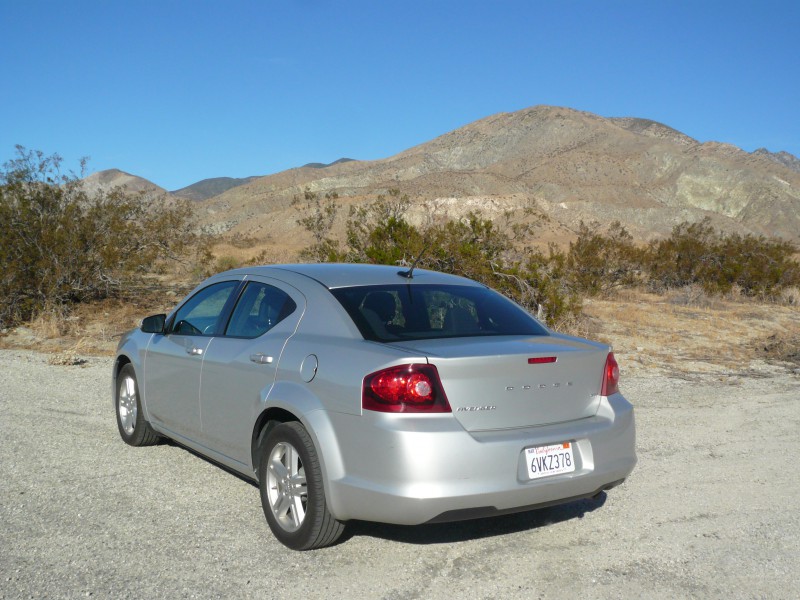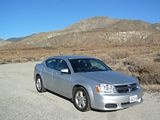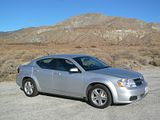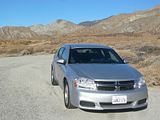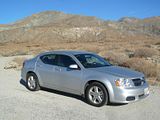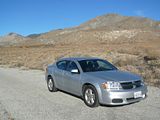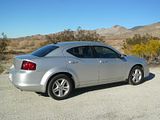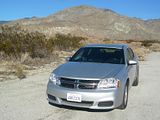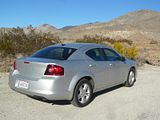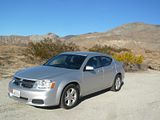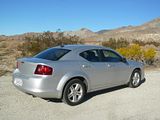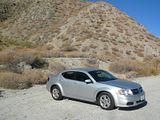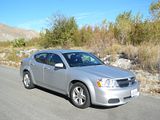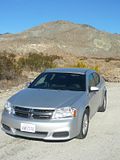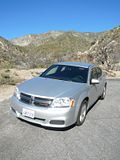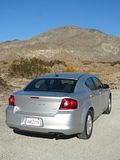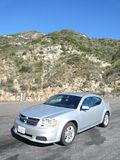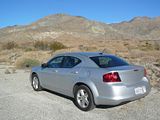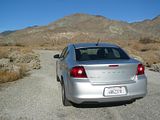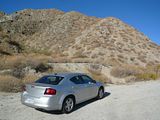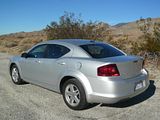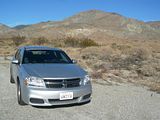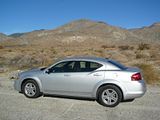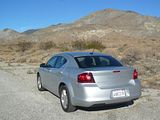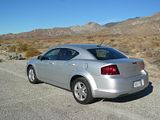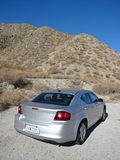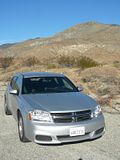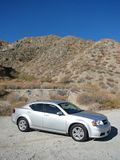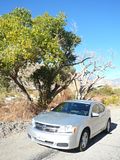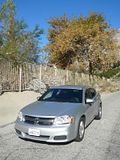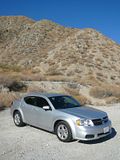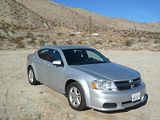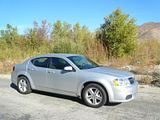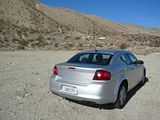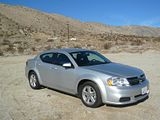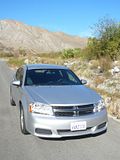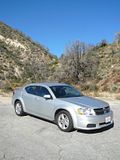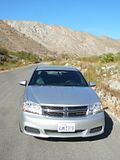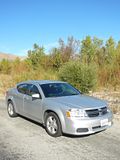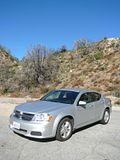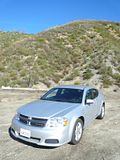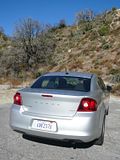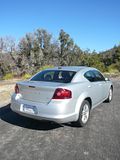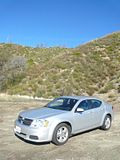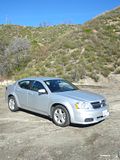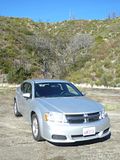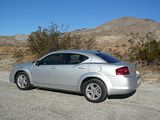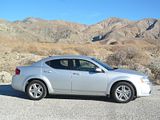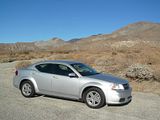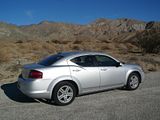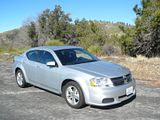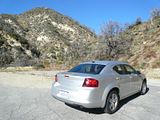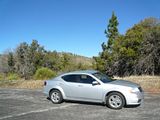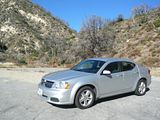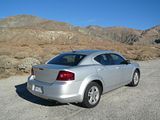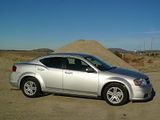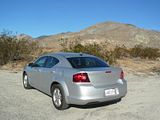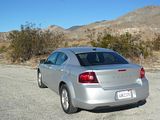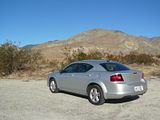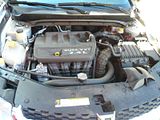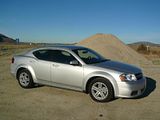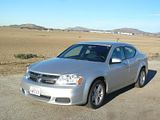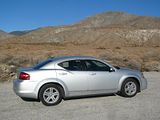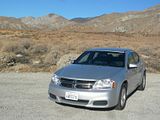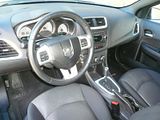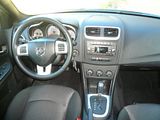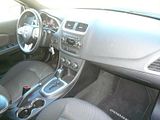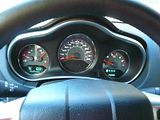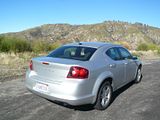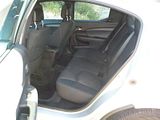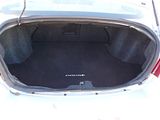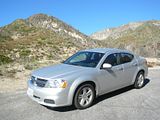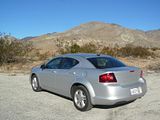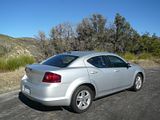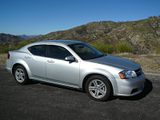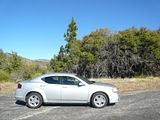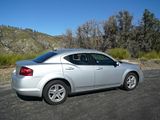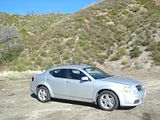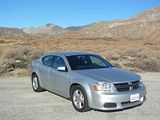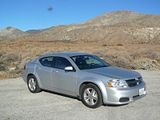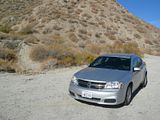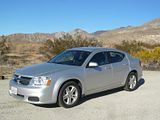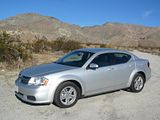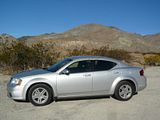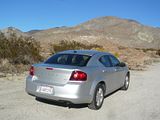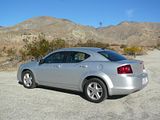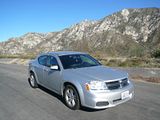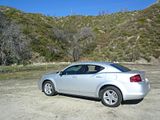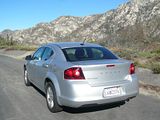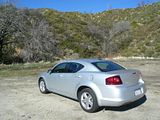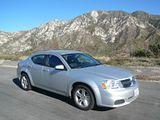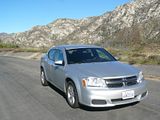The Chrysler Corporation launched new mid-sized sedans in mid-2006, ready for the 2007 model year. The Chrysler Sebring and Dodge Avenger might have looked physically very different, but under the skin they were effectively the same car. Of course that meant that if one of them was not up to par, then nor would the other one be, and first the motoring press and then the public found that indeed this was the case, with both Sebring and then Avenger getting poor reviews at launch, lambasted for scrappy interior design and finish (something of a Chrysler Corp speciality at a time when the other US domestic makers started to put more effort in to this aspect) as well as disappointing driving dynamics. Of the two, the Sebring took the worse beating as its styling was also not to the taste of many. In this regard, the Avenger fared better, or rather less badly, taking some design cues from its highly rated stablemate, the Charger. Whilst the Mopar MiniVans continued to sell strongly and the Challenger provided some much needed positive publicity, new owner Fiat Group knew that improving the mid-sized duo was a priority that could not wait for all new models. The results were seen late in 2010, with Sebring mutating into the less awkward looking 200 and some more subtle styling changes applied to the Avenger, Both received a new interior and there were plenty of mechanical changes as well. Sales increased as a consequence. However, things never stand still in the market, and since that time, almost all of the Avenger and 200’s competitors have been replaced, mostly in the past year or so, with a new Camry, Altima, Accord, Malibu and Passat already on sale, the latest Fusion in the starting blocks and the Mazda 6 a matter of weeks away. Things look set to get very tough again for the Avenger. To find out just how tough, I got behind the wheel of a typical rental spec model for a couple of days.
Although Dodge make much of the fact that the 283 bhp V6 is the most potent in its class, the reality is that rental spec cars are much more likely to come with the 173bhp 2.4 litre 4 cylinder unit as fitted to my test car. It is not a strong point of the car, as it had to work hard to propel the Avenger. Unless your acceleration is very modest indeed, it is unremittingly noisy, letting you know in no uncertain terms how hard you are working it. And to get some momentum, you will need to work it hard. SE models have to make do with the old four speed automatic, but SXTs such as the test car do have a more modern six speed box. Dodge would appear to have geared the Avenger to help with refinement when cruising at a steady speed on the freeway, and the results are that the cabin is remarkably quiet. Sadly this means that when any incline arrives, the car needs to change down, which is less than smooth or aurally peaceful. In anything other than long freeway drives, this does mean that this is not a particularly restful car, and the driver will probably curse the fact that he economised and did not opt for the V6 model. I travelled an awfully long way before the fuel needle moved at all, making me wonder if the gauge was not working. But eventually it did move off full, and at the end of the test I put in 12.77 gallons having covered 384 miles, which equates to 30.07 mpg US, or a rather impressive 35.9 mpg Imperial.
It was the steering and handling of the early Avengers that earned the model quite a few of the brickbats that came its way and the 2011 models introduced major modifications to try to help out. I never suffered the earlier cars, so can’t make the comparison, but can comment on the absolute standard achieved now, which is that the car is acceptable, but no more than that. The steering is pretty dead, but it does at least have some feel, and the handling is unlikely to allow the driver to get into trouble as it is front wheel drive “safe” without any sensation of sportiness. There is some understeer and with it some body roll on tighter corners but nothing unduly alarming. The ride was acceptable, coping well with all but the worst ridges and potholes of California’s ill-maintained road network. No issues with the brakes which did their job as required. A pull up handbrake is fitted between the seats. Visibility when manoeuvering is not brilliant as the rear screen is quite steeply sloped and the very kicked up rear side windows mean that there is a particularly thick C pillar. That said, the tail is quite stubby, so judging the extremities was not as hard as I initially feared.
It was the inside of the Avenger that needed the most dramatic improvements, and indeed this is where new owners put lots of effort, with a completely new dashboard appearing in the 2011 models. It is a huge improvement on what went before, with no sign of the straight hard edges and ill-fitting plastics, with the result that although it will not trouble the German makes for style or quality of materials it is at least acceptable now, Although you might not be able to detect it from photos, most of the materials are soft touch, and judicious use of a brushed aluminium type plastic on the steering wheel boss, around the instrument binnacle, gearlever and the audio unit and chrome highlighting around the instruments does lift what would otherwise be a rather sombre black finish to something that is quite tasteful if not exactly exciting. The instruments are presented under a single binnacle which is shaped a bit like the opposite of half a figure eight lying on its side. The outer pair of instruments – a dial containing fuel gauge and water temperature on the left and rev counter on the right – are correspondingly larger than the central speedometer. All are clearly marked and easy to read. Stalks on either side of the column operate the lights, indicators and wipers. The centre of the dash contains the audio unit mounted nice and high and then much lower down, three rotary dials for the air conditioning system. There is a refreshing simplicity to the overall presentation – the exact antithesis of Ford’s current approach to interiors.
The rental car companies rate the Avenger now in their “fullsize” category, but if you are expecting that means a roomy car that will take 5 adults and all their luggage, you are going to be disappointed. Even allowing for car grade inflation which has put all its competitors in this class as well, the Dodge must rank as the smallest inside (and out), so be warned. The back seat is fine for two adults, and three will fit without too much of a squeeze, with a reasonable amount of leg room unless the front seats are well back, and despite the slope to the rear roof line, sufficient headroom that they should not quite brush the roof lining. The boot is of moderate size, too. It is not a particularly regular shape as there is quite a lot of intrusion from the rear suspension, so although it does go back a reasonable way, the rearmost part is quite narrow and if you compare this to something like an Impala which is in the same rental car category, you will realise just how small the cargo area is in comparison. Inside the passenger compartment, there is a modest glove box, door bins, a small cubby under the central armrest and a little area in front of the gearlever for those odd and ends.
The Avenger is available in four trim levels: the base model is called SE, the volume-seller is the SXT, there is an SXT Plus, and the range is topped by the sporty R/T. The SE is clearly trimmed down to a price and boasts little in the way of luxury equipment. When you review the spec, the claims are of things like a tilt and telescopic steering wheel with radio controls and a height-adjustable driver seat with lumbar adjustment as two notable features on the base SE. The SXT adds a leather-wrapped steering wheel, an 8-way power driver seat, heated power mirrors, satellite radio, alloy wheels, automated climate control and a few other features. The SXT Plus brings with it the V6 engine, automatic headlights, music hard drive, rear spoiler, fog lights, and 18″ wheels. The top spec sporty R/T adds, among other things, leather upholstery, heated front seats, wireless cell-phone link, voice recognition, remote engine start, sports suspension and chrome alloy wheels. Dodge offers a cold-weather package (heated front seats, remote engine start) on the SXT and SXT Plus. An electric sunroof and a navigation system with traffic information highlight are on the Avenger’s small list of standalone options. Where the Avenger does score is with its low prices. Avenger starts at $18,995 and the SXT as tested lists at $21,495. Even the top of the range R/T is under $26,000, all of which undercut the competition by a large amount and explain some of the appeal of the model to both retail and corporate customers.
The pre-Fiat owned Dodge Avenger was almost certainly a car to avoid at all costs, falling well below class standards in so many regards. The changes rushed through for the 2011 model year certainly helped, although they were never going to be able to fix those deficiencies endemic in the design. Whilst I would struggle to say that the Avenger is a good car, or to recommend one, it is now at least one that you can tolerate, so if the rental car counter gives you one, and no choice of anything else, you should not grimace too much. If they do give you a choice, though, I would recommend you take almost any of its competitors, as they all evidence how the game has moved on.

